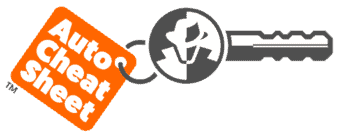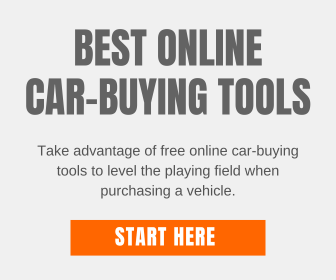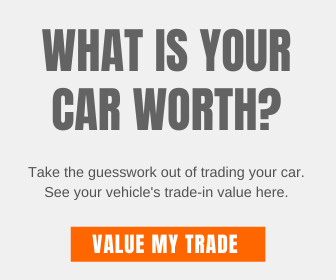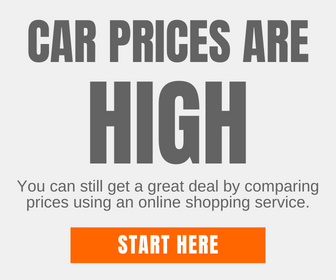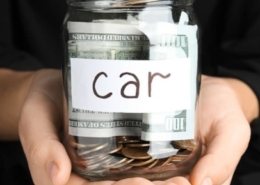Should You Buy or Lease a Car?
New cars are great, in principle anyway. If only they weren’t so expensive. That’s where leasing comes in. Leasing lets you get into a new car with little to nothing down and a low monthly payment. What’s not to like?
For some people, leasing is a great deal. For others, not so much. This article’s for you if you’ve ever wondered whether you should buy or lease a car. We’ll go through the advantages and disadvantages of leasing and compare it with buying. But let’s start by reminding ourselves what’s so great about a new car.
The Allure of a New Car
New cars have a lot going for them. You’re not inheriting anyone else’s problems or paying for the mechanical abuse they dished out. There’s no dirt or debris buried in hard-to-reach crevices and corners. And that’s before we think about how good it looks, dazzling the neighbors with factory-fresh paint!
There’s also the practical side. There’s a warranty if anything goes wrong, and new cars incorporate more safety equipment. Traction control and rearview cameras are standard, and growing numbers of vehicles come with blind-spot warning and even collision warning systems.
Last, there’s technology. If you want features like BlueTooth pairing for hands-free calling and Android Auto or Apple CarPlay, you need a new or newish car.
Something else to consider is maintenance. It will depend on your deal, but many dealerships provide two or three years of free servicing with a new vehicle.
Yes, there are lots of advantages to a new car. If only they weren’t so expensive! Before you go, run out and buy one. Follow my step-by-step guide on how to buy a new car and save the most money.
New Car Leasing Basics
The best way to think of car leasing is as an extended rental. While you’ll have a title document, it will state that a leasing company owns the vehicle. You will, however, be responsible for the annual taxes and insurance. You’ll also have to make a monthly payment to the leasing company.
The size of that payment is determined mainly by how much the vehicle will depreciate while you have it. You could think of it as paying for what you use. So after three years, if a car is worth 60% of its value when new, your lease payments will total the other 40%.
In addition, you have to pay interest on the money the lease company used to buy the car. That’s because you’ve effectively borrowed from the lease company to buy it. Then when the lease is up, you hand the vehicle back and leave with nothing.
Advantages of Leasing a New Car
Leasing has three significant advantages:
- No money down
- A low monthly payment
- Hassle-free vehicle replacement (at lease end!)
Business owners also have some tax issues to consider, but we won’t go into those here.
Let’s go through each of these advantages in turn.
No Money Down
It’s that simple. When you sign the lease paperwork, all you owe is the first month’s payment plus the various taxes and fees associated with buying any new car. But now, a word of caution.
You’ve probably seen advertisements for attractive lease deals – $149 a month and similar for vehicles listing at $20,000 or more. Make sure you read the small print. They almost certainly involve a sizeable down payment. That comes off the 40% of the car you’re leasing. It also eliminates the no-money-down benefit of leasing.
Low Monthly Payment
As we explained above, you only pay for about 40% or so of the vehicle when you lease. That’s different from buying, where you spend the whole 100%. You can spread a loan over a much longer term than a lease, but you will be paying more interest.
Hassle-free Replacement
When you own your car, changing it involves trading in or selling privately to free up money for the next one. Leasing avoids that hassle. Just return the old car and lease a new one. Leasing is particularly beneficial for people who like to change their car regularly.
The Benefits of Buying a New Car
Before leasing, everyone bought. At one time, people would save their hard-earned money for years, then hit the dealership with a wad of bills in their pocket or briefcase. Of course, that approach means waiting until you can afford the car of your dreams, which people don’t like to do (even if it does avoid paying interest.) Today most people buy their new vehicle with a combination of a lump sum down payment and money they borrow.
Buying has two considerable advantages over leasing:
- The car is yours to keep for as long as you want. Yes, you have to pay off the loan, but then it’s yours free and clear.
- It was less expensive. That might be hard to follow since the monthly loan repayment is almost more than a lease payment, so let’s explain. The car will still have some value when the loan is free and clear. In addition, you won’t be paying any interest charges. The vehicle will cost gas and insurance; you can keep doing that until you want a new car.
Consider the Negatives of Leasing
Before being seduced into signing for that low monthly payment, take a moment to consider the dark side of leasing. In particular, make sure you appreciate:
- It’s expensive
- There are mileage limits
- There are rules about return condition
- What happens if you exceed the warranty period?
- What if you’re a very low mileage driver?
- Getting out early
Let’s go through each one of these.
Expensive
Regarding the total costs, leasing is an expensive way to drive a new vehicle. One reason is that new cars take a big depreciation hit in their first three years. Keep a vehicle longer, and the average cost per year decreases.
Mileage Limits
The more miles on the odometer at the end of the lease period, the lower the vehicle’s value. That’s why every lease agreement includes a mileage limit. Typically, those advertised cheap monthly deals have a limit of 10,000 miles per year. Go over that, and you’ll pay $0.25 or more for each additional mile.
Lease costs don’t go up a great deal if you do 12,000 miles a year, but leasing becomes even more expensive if you drive further. (The rationale is that there’s not much demand for high mileage three-year-old cars.)
Return Condition
Lease companies don’t expect your car to look new after three years, but they want to be able to resell it without a lot of reconditioning. A few months before the lease ends, they’ll send you information on what wear and tear they consider acceptable and what they will bill you. If you’re looking to lease a car or truck that will lead a hard life, you may pay for some significant repairs when it returns.
Run Out of Warranty
Standard lease deals are for three years, as are most warranties. If something goes wrong, the manufacturer covers the repairs, and there’s no need to worry. Consider a four-year lease on a car with a 36-month warranty. Or, for that matter, going over the 36,000-mile limit on most warranty coverage. Suppose something goes wrong when the vehicle is out of warranty coverage, and you are on the hook for the repair costs.
That’s the case even if you’re just days away from turning the car back in. On the flip side, there is no reason to buy a five-year extended warranty if you’re signing a 42-month lease. Don’t let the dealer try and pull a fast one on you.
Low Mileage Driver
Say you’ve signed a lease that lets you drive 12,000 miles a year, and your circumstances change. (Perhaps you get a new job within walking distance of your apartment.) You won’t get any credit (or very little) for turning the car in with less than 36,000 miles on it, even though it will be worth a little more. The result is that your cost per mile goes up.
Getting Out of a Lease Early
It’s possible but costly. Depending on the car’s age, you could end up paying almost as much to turn it in early as you would have to keep it to the end of the lease. When they need to do this, some drivers can look online for services that help find people who will take over your lease for you. However, they usually are very time-consuming and rarely work out.
Making Up Your Mind
There’s no simple answer to the question, “Should I buy or lease a car?” It depends on your priorities and your financial situation. (Do you have a large down payment, and what’s your credit score like?) It would be best if you also remembered that a good, recent model used car will always cost you less than one brand new.
No matter which way you go, before you sign the retail contract or lease agreement, read everything. Make sure you understand it, and only then sign your name. You may be worn down and want to drive your new car, but this is not the time to rush. When you start on your car search, take your time. You don’t want to drive off happy with your purchase only to suffer buyer’s remorse later when you realize you signed and agreed to something you did not wish to.
Whatever you decide to go, it’s essential to have a friend on your side. At Auto Cheat Sheet, We can’t stand beside you, but we have hundreds of pages of car buying information, strategies, and tips that will help you through the car buying process. Check back regularly for tips and advice on car buying, leasing, and happy motoring!
Your Friend in the Car Business
The number one tip for saving the most money when buying a new or used car is always to take your time and “DO YOUR RESEARCH FIRST!” AutoCheatSheet.com has helped millions of readers navigate the new and used car process and avoid dealer scams.
No matter if you want to lease or buy a new car. I highly recommend using an online referral service such as Ryde Shopper, Edmunds, Motor Trend, and Cars Direct before walking into a car dealership. Their free online price quotes will automatically include any discounts or cash-back incentives currently available in the marketplace. This information will help level the playing field between you and the dealer. And also let you know right away which dealers are willing to be more flexible on price.
